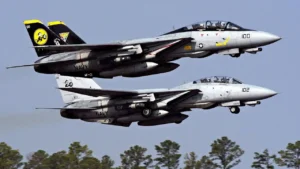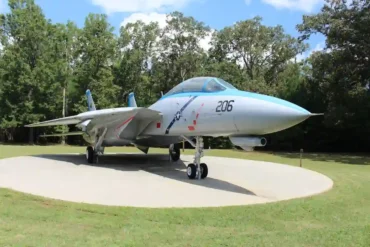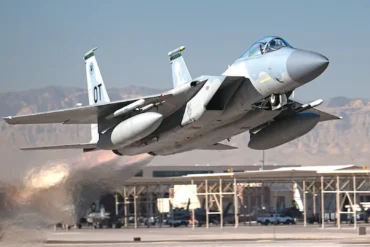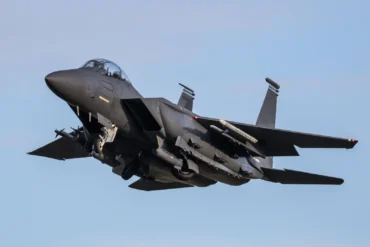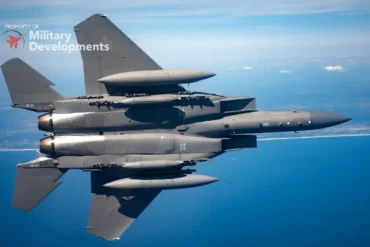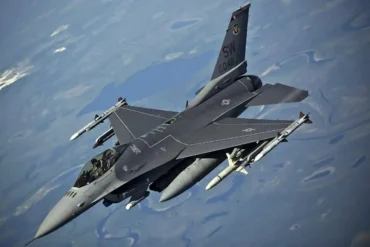The F-14D Tomcat is a formidable multi-role fighter aircraft that has earned a reputation for its versatility, power, and precision. As the ultimate variant in the Tomcat series, the F-14D combines advanced avionics, superior airframe design, and an impressive armament suite, making it one of the most capable aircraft in its class. In this article, we will explore the armament of the F-14D Tomcat, detailing its weapon systems, ordnance capacity, and mission capabilities.
1. Overview of the F-14D Tomcat’s Armament Systems
The F-14D Tomcat was designed with an emphasis on flexibility, able to perform various roles ranging from fleet air defense to precision strike missions. It boasts an extensive array of weapons and equipment, enabling the aircraft to engage a wide variety of targets, from air-to-air combat engagements to surface strikes and reconnaissance missions. The aircraft’s armament suite includes a combination of air-to-air missiles, air-to-ground bombs, precision-guided munitions, and advanced targeting pods.
Primary Guns
The F-14D Tomcat features a single 20mm M61A1 Vulcan 6-barreled rotary cannon. This rapid-fire gun is mounted in the nose of the aircraft and is used primarily for close-quarters combat. The M61A1 is renowned for its reliability and high rate of fire, making it highly effective in dogfights and against low-flying aircraft. The cannon is fed by a 675-round magazine, providing the pilot with ample ammunition for air combat. The M61A1 Vulcan remains one of the most potent and widely used weapons in military aviation.
Hardpoints and Payload Capacity
The F-14D Tomcat is equipped with 10 hardpoints distributed across its airframe. These hardpoints allow the aircraft to carry a wide variety of ordnance and fuel tanks. The hardpoints are configured as follows:
- 6 under-fuselage hardpoints
- 2 under nacelles
- 2 on wing gloves
This configuration enables the F-14D to carry a total ordnance load of up to 14,500 pounds (6,600 kg) of weapons and fuel tanks, giving the aircraft substantial firepower and extended range. The hardpoints are versatile, allowing for a combination of different types of air-to-air missiles, air-to-ground bombs, rockets, and fuel tanks, making the F-14D capable of handling a wide range of mission profiles.
2. Air-to-Air Missiles
The F-14D Tomcat is best known for its exceptional air superiority capabilities, and its armament suite includes an impressive selection of air-to-air missiles designed to engage hostile aircraft at varying ranges.
AIM-54 Phoenix
The AIM-54 Phoenix is the signature missile of the F-14D Tomcat and one of the most powerful air-to-air missiles ever produced. With a range of over 100 miles (160 km), the Phoenix allows the F-14D to engage multiple targets at long distances, providing the pilot with a standoff capability that few other aircraft can match. The missile’s advanced radar-guidance system and high-explosive warhead make it ideal for engaging enemy bombers and fighters at extreme ranges.
AIM-7 Sparrow
The AIM-7 Sparrow is a medium-range radar-guided missile that can be used for intercepting enemy aircraft at ranges up to 20-30 miles (32-48 km). The Sparrow is designed for use in both offensive and defensive situations, allowing the F-14D Tomcat to engage targets in a variety of environments. Its semi-active radar homing guidance system allows the missile to lock onto targets and correct its course during flight for greater accuracy.
AIM-9 Sidewinder
The AIM-9 Sidewinder is an infrared-guided short-range missile designed for close combat situations. It is one of the most widely used air-to-air missiles in the world. The F-14D Tomcat can launch the Sidewinder from its wing-mounted hardpoints, making it highly effective in high-speed engagements. Its infrared guidance system allows it to lock onto the heat signature of enemy aircraft, making it ideal for dogfights and engagements at short ranges.
3. Air-to-Ground Munitions
In addition to its exceptional air-to-air capabilities, the F-14D Tomcat can also perform air-to-ground strikes, using an array of bombs and guided munitions. This multi-role capability enables the aircraft to perform a wide range of missions, from precision strikes to close air support.
JDAM Precision-Guided Munitions
The Joint Direct Attack Munition (JDAM) is a family of precision-guided bombs that are capable of striking targets with pinpoint accuracy, even in poor weather conditions. The F-14D Tomcat can carry and deploy JDAMs, which use a GPS-aided guidance system to steer the bomb to its target. These bombs are highly effective against stationary targets such as infrastructure, radar stations, and bunkers, making them ideal for strategic strikes.
Paveway Series of Laser-Guided Bombs
The Paveway series consists of laser-guided bombs that can be used for highly accurate strikes against moving and stationary targets. The F-14D Tomcat is equipped with the necessary hardware to carry and launch Paveway bombs, allowing the aircraft to engage high-priority targets such as command centers, tanks, and artillery. The use of laser guidance ensures that the bomb remains locked onto its target throughout its descent, maximizing the likelihood of a successful strike.
Mk 80 Series of Unguided Iron Bombs
The Mk 80 series comprises a variety of unguided bombs that are used for general-purpose bombing. The F-14D Tomcat can carry several Mk 80 series bombs, including the Mk 82 and Mk 84 variants, which are effective against large-area targets such as enemy bases, troop concentrations, and vehicle convoys. These bombs are delivered with a high degree of accuracy, especially when using advanced targeting systems like TARPS.
Mk 20 Rockeye II Cluster Munition
The Mk 20 Rockeye II is a cluster munition that is highly effective against armored vehicles, equipment, and troop concentrations. The F-14D Tomcat can deploy Rockeye II munitions from its hardpoints, delivering a devastating effect over a large area. This makes the Rockeye II ideal for anti-tank and counter-insurgency missions, as it disperses numerous submunitions across a wide target area.
4. Additional Equipment and Systems
In addition to its impressive array of munitions, the F-14D Tomcat is equipped with advanced electronic warfare and reconnaissance systems that enhance its operational capabilities.
Tactical Airborne Reconnaissance Pod System (TARPS)
The TARPS is a reconnaissance pod system that is mounted on the F-14D Tomcat for intelligence-gathering missions. It allows the aircraft to conduct photographic reconnaissance and electronic surveillance over enemy territory. The system can capture high-resolution imagery, providing valuable intelligence for military planners.
LANTIRN Targeting System (LTS)
The LANTIRN Targeting System (LTS) is an infrared targeting system that enhances the F-14D Tomcat’s strike capabilities. This system provides the pilot with the ability to detect and engage targets with high precision, even in poor visibility conditions. The LTS pod is mounted under the aircraft and is used primarily for precision strikes against ground targets.
5. Fuel and Range Capabilities
The F-14D Tomcat is equipped with two 267 US gallon drop tanks, which can extend its range and loiter time. These external fuel tanks allow the aircraft to operate in extended-range missions, such as deep strike or long-duration combat air patrols. With a maximum range of over 1,600 nautical miles (2,960 kilometers), the F-14D Tomcat can cover vast distances and provide air defense and support in a variety of operational theaters.
Conclusion
The F-14D Tomcat is an exceptional aircraft that combines advanced technology with an impressive armament suite, making it a powerful asset for both air-to-air and air-to-ground operations. With its wide range of missiles, bombs, guns, and targeting systems, the F-14D is well-equipped to handle a variety of mission types, from high-speed intercepts to precision strikes. Whether operating in defensive or offensive roles, the F-14D Tomcat remains one of the most versatile and capable aircraft in the world’s air forces.
